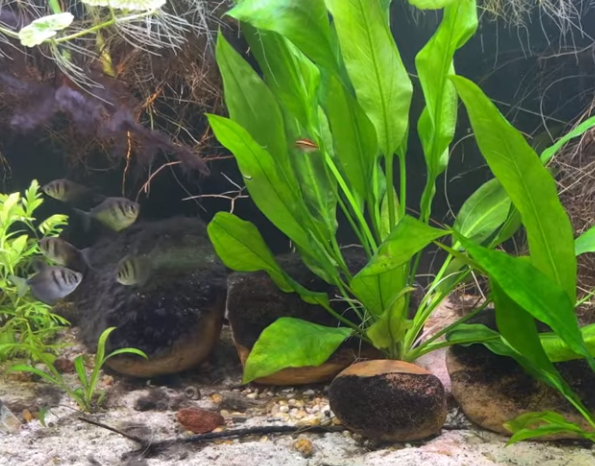
Betta fish have beautiful colors and striking flowing tail fins, but they can become quite dull on their own in a tank. Adding some betta fish plants to your tank will liven things up and give your fish a more natural and pleasing habitat.
Natural plants are glorious, but they also provide oxygen and remove ammonia from the water for a healthier tank. Carefully chosen plastic plants are a convenient alternative.
Let’s discover all about what plants work with betta fish.
Table of Contents
Which Plants Are Better for Betta Fish?
When choosing plants for your betta fish, ensure they are non-toxic and won’t harm your fish. Live or artificial plants can potentially cut or strangle your fish, so choose carefully.
Choose live plants for their incredible colors and water oxygenation; plus, these remove ammonia from the water for optimal water parameters. However, live plants can require quite intensive upkeep, with fertilizing and pruning needed for some species.
Artificial or fake plants are better options if you are away frequently and can’t look after real plants. There are incredible plant designs and colors available, and with the right choice, your fish will have a stunning backdrop. Your bettas will love swimming among the plants, lounging on the leaves, and having a more exciting environment.
You can even keep a combination of real and fake plants to fit your budget, and your fish can forage on some natural plants. Various plants will also mimic the betta’s natural habitat and potentially increase their lifespan.
Betta-Safe Plants
The most common aquatic plants used in a planted betta tank are betta-safe. On the other hand, many plants marketed with a betta bowl should never be placed in an aquarium. Bamboo and peace lilies are two examples of these plants. Although your betta buddy won’t eat just any plants, certain plant toxins can be lethal for the fish. The same is true for the betta fish terrarium, which is frequently sold with houseplants rather than actual aquatic plants.
Mistaken Identity
Large producers supply aquatic plants to the multi-trading markets in Europe and the Far East. These businesses grow a wide variety of aquarium plants and houseplants. Large bunches of mixed plants usually include non-aquatic species. So, how can you identify a houseplant if you purchase a mixed plant bunch?
- You should reject multi-color plants, such as plants filled with mixed red and green or green and white colors.
- A houseplant will stand upright in a container alone, but most aquatic plants would droop when not submerged in water.
- The leaves of houseplants are bright and firm to the touch, while aquatic plants are often soft and spongy in texture.
- All non-aquatic plants will die and decay in the tank, damaging the ecosystem by raising pH levels and increasing nitrates as they decompose. In addition, non-aquatic plant leaves are frequently pointed at the tips to let rainfall runoff, which makes house plants dangerous to fish.
You need to identify whether the plant is a house or aquatic plant to ensure the best for your betta fish.
Best Live Betta Fish Plants
Choose plants that look good and act as a source of nutrients for your betta fish. Here are some options for live betta fish plants:
1. Java Fern
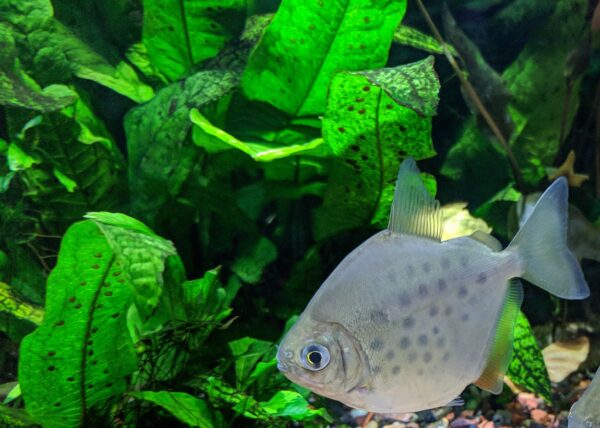
Java ferns are perfect for beginners and easy to grow. It doesn’t have any special temperature and light requirements to grow properly. These ferns grow so easily, you can even just pluck some leaves, pop them in the water, and the plant will start growing (but anchoring it helps the plant thrive).
Just ensure not to bury the rhizome (the plant stem) when anchoring the roots. Java ferns don’t grow quickly, so you mustn’t prune them too frequently. They tend to float on the water surface, so it’s a good idea to tie them down on a small rock or ceramic base.
Not only will your betta fish have fun playing hide and seek among the leafy ferns, but they’ll also keep the water fresh by releasing oxygen.
Check out our complete guide on java fern here.
2. Java Moss
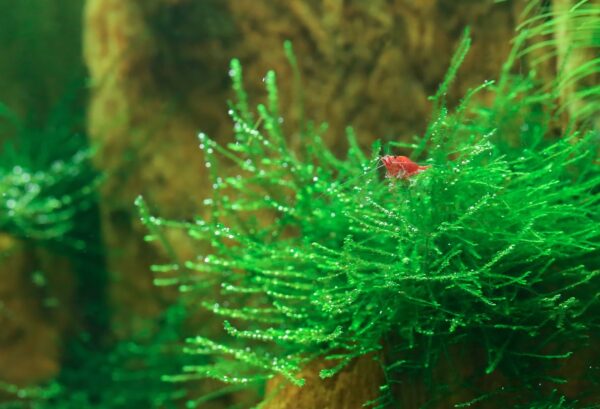
Java moss thrives in pretty much any condition, but it prefers cool water. Even so, these mosses still do fine in water temperatures for betta fish (74 – 80 ℉). Like the Java fern, you’ll need to tie the plant to the rock or something to prevent it from floating around. It also grows very fast and needs frequent trimming.
Check out our complete guide on java moss here.
3. Betta Balls (Marimo Moss Balls)
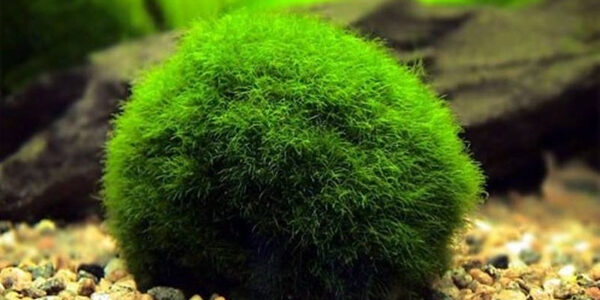
If they’re called betta balls, they’re likely to be the perfect plant for a betta fish tank. These little moss balls of algae can last forever and don’t have any special maintenance requirements. When you change the water in the tanks, just squeeze the Marimo balls to remove dirt or any other buildup.
The round, fluffy balls are adorable, and bettas love resting on top of or even just rubbing against them. These algae balls also absorb chemicals and excess nutrients, keeping the environment safe and healthy for bettas.
If you have more than one betta tank, you can break up the moss balls and divide them into the tanks. The balls still keep growing, so you don’t need to get new plants to plant your new tank.
Check out our complete guide on betta balls here.
No products found.
4. Hornwort
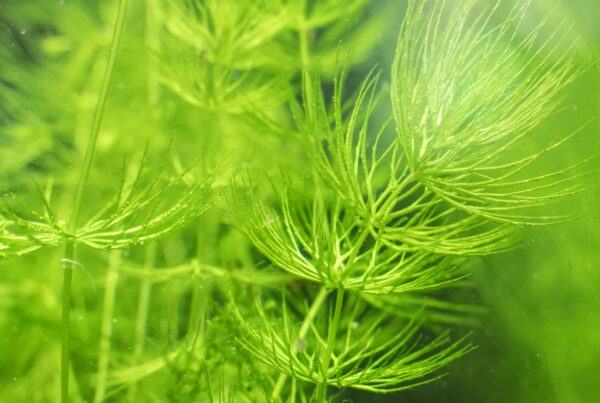
Hornworts are a little more high-maintenance than other plants, but they look great and your bettas will love them. They grow pretty fast and will be flowing around your aquarium in no time.
Make sure you trim them regularly. They also shed nettles, which if left in the water will rot and pollute the water. You’ll have to clean your tank more regularly if you put in Hornworts.
Your bettas, especially the baby ones will love hiding among the leaves and stalks. The plant also provides shade from the sun and will add a touch of flair to any fish tank or aquarium.
Check out our complete guide on hornwort here.
5. Anacharis
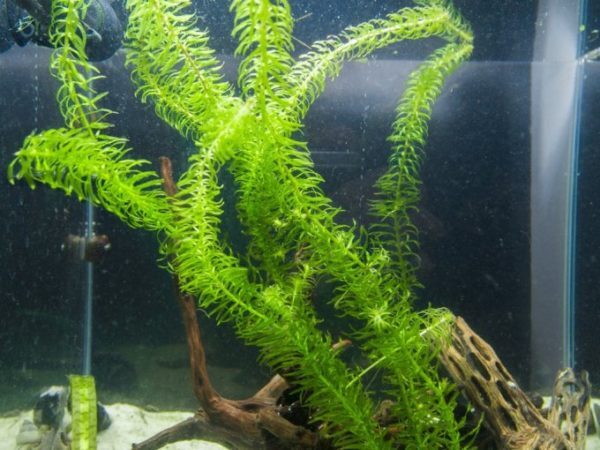
Anacharis flushes toxins out of the water and slows down algae growth. You can be as creative as you like when decorating your tank with Anarachis because you can plant them or leave them to float around.
The plants form a mini forest in your tank, giving your bettas a great place to hide or take a nap. As the anacharis grows, the wispy strands can create a makeshift curtain or backdrop for the tank or aquarium wall. Anacharis grow very fast, so you’ll need to trim them frequently.
Check out our complete guide on anacharis here.
6. Anubias
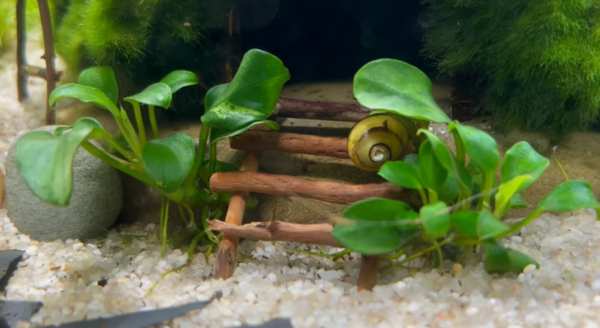
The Anubias genus is another rhizome plant genus that comes in various forms, sizes, and textures. Anubias plants do not require sandy or gravelly substrate and are usually affixed to driftwood. Alternatively, you can just place the anubias with the plastic pot it’s cultivated in into an easy planter decoration for your tank.
Bettas will love the broad leaves that they can hide under or nap on, and the contrast of a larger leaf shape is perfect with a more delicate plant like Java moss.
7. Cryptocoryne
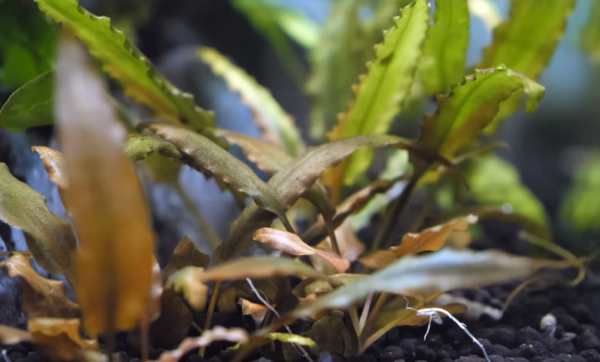
With its low to medium-light requirements and ease of maintenance, Cryptocoryne is an excellent choice for planting in larger tanks where you may have an area with lower light. You can combine it with other plants, stones, and driftwood. In Cryptocoryne, there is a vast variety of species, all of which have a unique appearance.
The dark green color of this particular species is perfect for a planted aquarium to showcase the bright colors of your betta fish. The long, threaded leaves are an ideal way to add depth and height to your tank, and with a bit of current from a power head, the leaves add excellent rhythm and flow.
8. Water Sprite
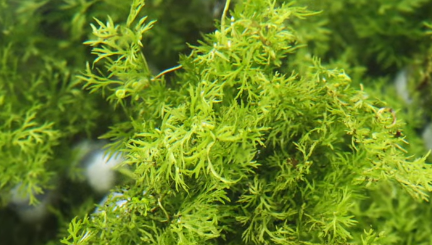
This simple-to-grow stem plant is excellent as it can be planted on the substrate or used as a floating plant. The delicate, lacy leaves provide a thick jungle for your betta fish to explore and create bubble nests. Young betta fish can hide among the dense leaves, and with a few driftwood pieces or natural stones, your tank is sure to become a pleasing view, too.
No products found.
9. Sword Plant
Consider filling a big aquarium with a giant sword plant, such as an Amazon or red flame sword. This traditional aquarium plant is popular because of its low maintenance requirements and large, broad leaves that provide resting and hiding areas for many aquatic animals, including betta fish.
Simply root the sword plant, and it will thrive in your tank. Ensure your tank is at least 8-20 inches deep to give the plant enough room to grow. Sword plants do best in low-light aquariums, perfect for a basic setup with no light.
10. Red Root Floaters
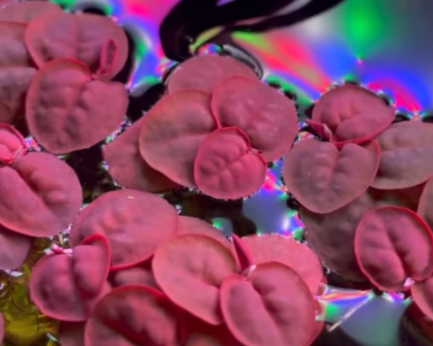
Red root floaters are an excellent choice to create a more natural environment for your betta tank. The leaves help integrate the surface with the rest of the tank, and the red roots form an exceptional filtration system to improve water quality.
If you let the red leaves grow dense (and they do since they grow quickly) and cover the water surface, you’d do well to use a planting frame, which keeps an area open where your betta can be fed.
When the leaves grow too densely, it’s a simple matter of scooping out the excess to thin the floating carpet and let in more light.
11. Pennywort
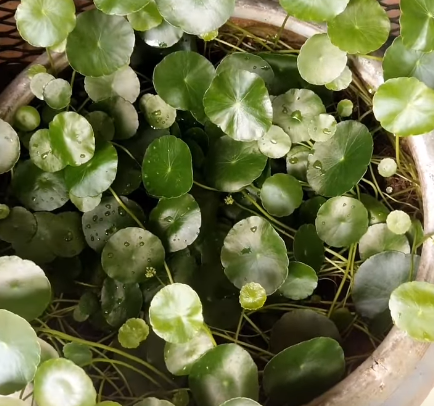
Pennywort is a creeping plant that grows in swamps, ponds, and lakes. It can quickly establish on your aquarium surface, and the leaves can reach an impressive 8 inches each. Use pennywort as a floating plant or anchor it in the substrate for a forest of soft leaves where your bettas can play.
While pennywort requires additional light, it’s a reasonably low-maintenance option for your betta tank. However, it’s a quick-growing plant, so you may need to prune it back frequently to ensure it doesn’t take over your tank. Bettas love to hide among the leaves, and it’s perfect if you are breeding bettas.
12. Duckweed
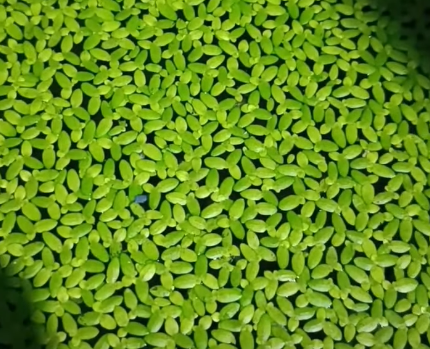
Duckweed is a low-maintenance aquatic plant that’s ideal for creating a realistic, marshy atmosphere in your betta’s aquarium. It combines really well with Wisteria and other lacy plants. Use duckweed as a floating “air” carpet where your bettas can enjoy bubble nests and hide out or play.
Another benefit of duckweed is how it oxygenates the water and absorbs excess ammonia as part of the nitrification cycle. Your bettas will become more active, healthy, and happy with additional oxygen.
13. Hygrophila Difformis (Wisteria)
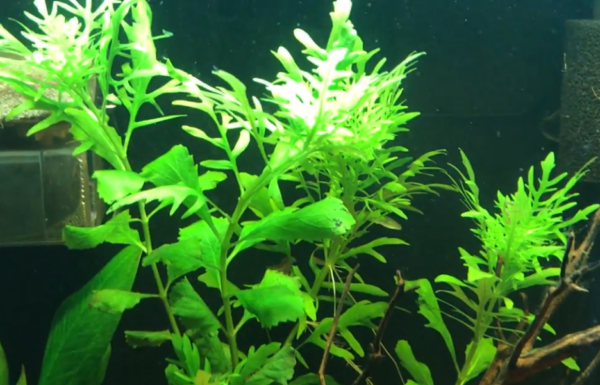
Another type of lace-leafed plant that betta fish and their owners enjoy is Hygrophila. The plant leaves form a soft forest that betta enjoy for relaxation or resting. Hygrophila can grow up to 4 inches tall, so ensure sufficient tank depth to let the plant grow freely.
The plant is brilliant green, with broad, lace-patterned leaves that form a stunning display. Water Wisteria’s overall form depends on its placement in the tank. It can be grown in a 10-gallon tank as a mid-to background plant.
14. Amazon Frogbit
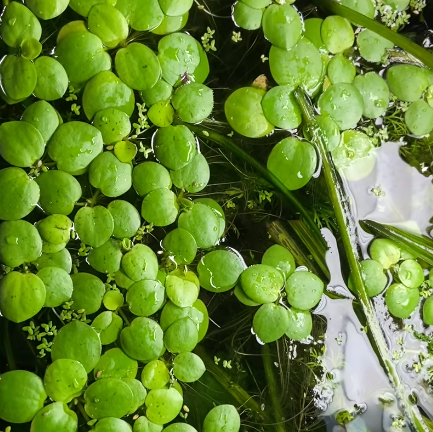
Frogbit is an excellent plant for betta fish aquariums since it forms a dense carpet of surface leaves with substantial floating root systems that your bettas can nest in, hide among, and feed on. The male bettas will build their bubble nests among the dense roots, which helps stimulate their natural breeding behavior, and you’ll enjoy watching their courtship displays.
15. Christmas Moss
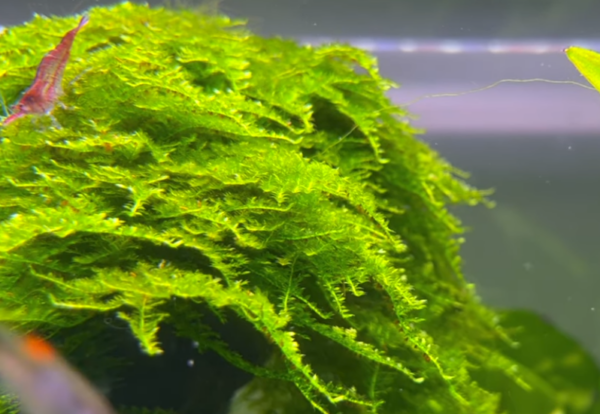
Christmas moss is frequently used to wrap aquascaping rocks or aquarium driftwood. Adding moss to the hardscape creates a visual contrast between the hard substrate and soft lace-patterned leaves. Your bettas will love gliding above the leaves, and the young fries will hide among the dense leaves. Adding Christmas moss to your betta tank also gives your bettas something to nibble on, while the bright green leaves increase the tank’s oxygen parameters.
Lighting Requirements for Live Plants
If you maintain your tank with live plants, you’ll usually need an artificial light source to keep them alive. If you still haven’t set up your Betta tank (or want to improve), we recommend investing in a high-quality light system. LED lights are best, and with so many different lights available, you can find a light system that suits your design and budget needs.
Fake Plants for Your Bettas
If you can’t afford to buy and maintain live plants (or you simply don’t have time for the maintenance), you don’t have to leave your tank empty. Artificial plants like the betta Amazon sword and Marina pink orchid can spruce up your tank and still give your bettas something to explore, hide among, and rest on.
Here are a few artificial plants to consider adding to your betta tank.
1. Zoo Med Betta Hammock
Zoo Med betta hammocks are natural-looking, non-living plants that provide your betta with a safe and natural place to rest. Bettas can lounge on the broad leaves, while male bettas can build bubble nests under the leaves.
2. Marina Natural Silk Red Plant
Marina natural silk red plants are the most popular silk plants, which create a realistic look in your tank. The plant stands around six inches tall, is a fantastic foreground item, and is designed to move softly with the power head current. Your bettas will thrive with these leaves to play among, and the soft silk fabric won’t cut fins or harm your fish.
3. Imagitarium Inline Betta Plant
This lovely, lifelike silk plant is suitable for a foreground decoration and a betta resting spot. The material is long-lasting, will not fade, and is entirely safe to use in betta tanks.
4. Smoothedo-Pets Aquarium Plants Fish Tank Decorations
An alternative to the Imagitarium option is the Smoothedo-Pets aquarium plants, which feature soft silk leaves, vibrant non-fade colors, and dense, broad leaves where bettas can lounge and hang out. The weighted base makes placing the artificial plants easy, and you can conveniently move the plant around as you try different tank placements to suit your bettas.
So, Live Or Fake Plants?
It is entirely up to you to use live or synthetic plants in your betta aquariums. Here are some of the benefits and drawbacks of keeping live plants:
Advantages of Keeping Live Plants
Better Filtration
Many fish owners obsess about their filtration systems while entirely ignoring live plants. Aquatic plants are one of the best filtrations available when used in aquariums. The oxygen boost is vital for healthy and active bettas.
Algae Growth Is Reduced
Algae and plants compete for the same nutrients. Excessive nutrient levels will cause algae bloom. Including plants in your betta aquarium significantly reduces the amount of nutrients accessible to harmful algae.
Disadvantages of Keeping Live Plants
Maintenance
Fake plants are designed to “set and forget.” Live plants, on the other hand, need more effort. You must ensure the plants receive adequate light and nutrients, trim them every few weeks, and pay close attention to water conditions. Live plants can also develop diseases, be eaten by fish, and may not always look their best.
Lighting Requirements
To thrive, live plants require light. Large tanks with more demanding plants may end up costing you more as you’d have to add expensive lighting systems with different light spectrums to suit the fish and plants.
Aquatic Plants Vs. Semi-Submersible Plants
You’ve probably seen aquarium setups where plants grow out of the aquarium. Water garden specialists often construct an aquarium maintained in this manner. For example, growing semi-submerged pennywort in an aquarium is popular among certain betta owners.
Setting up a Betta Fish Tank
1. Place the aquarium on a leveling mat, ensuring the tank is on a strong enough surface for the weight (with water)
2. Insert your filter and heater
3. Place your gravel and other substrate
4. Add your plants and decorations
5. Fill with water (unchlorinated for fish safety)
6. Add water treatments to remove harmful chemicals
7. Run tank filters with a fishless cycle to acclimatize your plants
8. Wait two weeks, then add your bettas
Maintenance Is Key
If you keep live plants in your betta fish tank, ensure you properly care for them. While most plants for betta tanks are low maintenance, some require regular trimming and regular skimming of the water for debris. With the proper care, your plants will grow indefinitely, make your tank look great, and provide an almost natural habitat for your betta fish.
FAQs
Yes, there are some common problems (as with any garden). With regular care and weekly plant checkups, your planted betta tank will thrive and remain in top condition. Ensure you check for signs of rot, leaf fall, and discoloration of live plants to avoid serious plant illnesses.
Live plants offer additional benefits to planted aquariums, such as filtration of harmful ammonia and excess nutrients from the tank to help oxygenate water and reduce algae. Fish can feed on live plants (they’re not likely to eat plastic plants).
Betta fish can graze on plants as they are omnivores, but they prefer to feed on zooplankton, tiny crustaceans, and the larvae of aquatic insects like mosquitoes.
Conclusion
Now you are armed with all the essentials, you can confidently select the best aquarium plants for your betta fish. Living plants contribute oxygen to the water, boosting the growth of beneficial microorganisms and eliminating harmful pollutants.
Fake plants can be a suitable replacement for live ones. Synthetic plants do not require upkeep or specific lighting and always look their best. Cleaning artificial plants is as easy as removing them, rinsing them, and returning them to the tank.
Which plants will you choose for your betta tank to create a natural environment that’s fun, safe, and beautiful?
No related posts.







